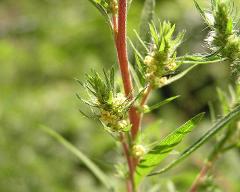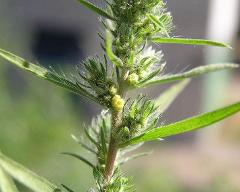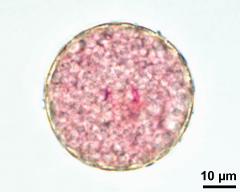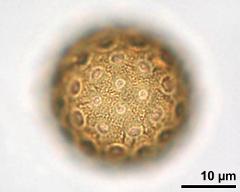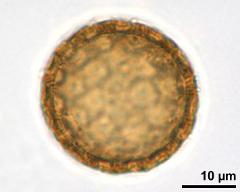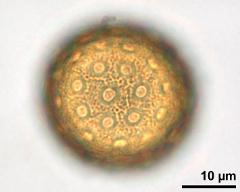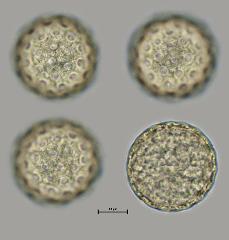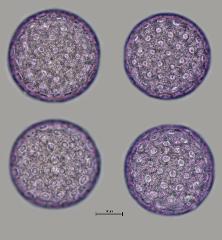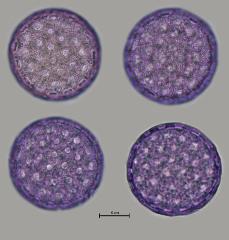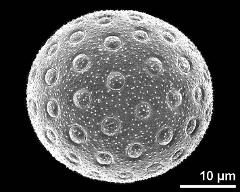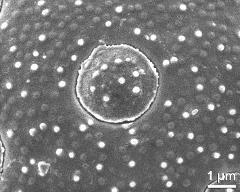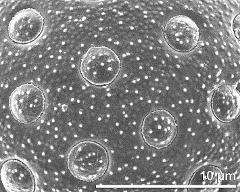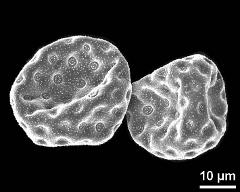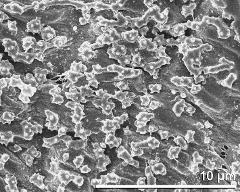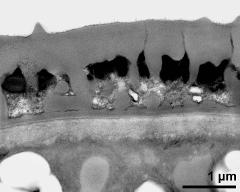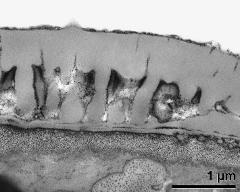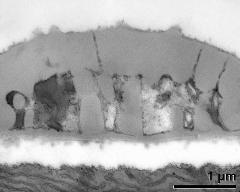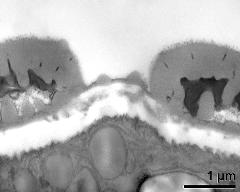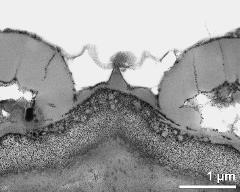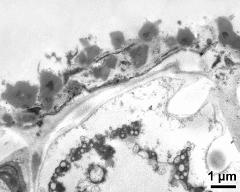Bassia scoparia
Taxonomy: Angiospermae, Caryophyllales, Amaranthaceae, Bassia
Links: http://flora.nhm-wien.ac.at/Seiten-Arten/Bassia-scoparia-scop.htm
Annotations: according to Fischer et al. 2005 Bassia is a Synonym of Kochia
Published: 2021-03-08
Pollen Description
Shape, Size and Aperture
pollen unit: monad, dispersal unit and peculiarities: monad, size (pollen unit): medium-sized (26-50 µm), size of hydrated pollen (LM): 31-35 µm, shortest polar axis in equatorial view (LM): -, longest polar axis in equatorial view (LM): -, shortest diameter in equatorial or polar view (LM): 31-35 µm, longest diameter in equatorial or polar view (LM): 31-35 µm, pollen class: porate, polarity: isopolar, P/E-ratio: -, shape: spheroidal, outline in polar view: circular, dominant orientation (LM): polar, P/E-ratio (dry pollen): -, shape (dry pollen): irregular, outline in polar view (dry pollen): irregular, infoldings (dry pollen): irregularly infolded, aperture number: >6, aperture type: porus, aperture condition: porate, aperture peculiarities: pantoaperturate, operculum
Ornamentation and Structure
LM ornamentation LM: verrucate, gemmate, scabrate, nexine: -, sexine: -, SEM ornamentation SEM: microverrucate, microechinate, suprasculpture SEM: -, TEM tectum: eutectate, infratectum: columellate, foot layer: continuous, endexine: absent, intine: monolayered, wall peculiarities: -, supratectal element: -
Miscellaneous
pollen coatings: primexine matrix, pollenkitt, reserves in cytoplasm: starch, cell number: 3-celled, Ubisch bodies: present
Author(s) of diagnosis: Diethart, Bernadette; Auer, Waltraud
Pictures
Picture legend
- flower(s), photographer: Diethart, B.
- flower(s), photographer: Diethart, B.
- pollen grain with two sperm cells - fresh, rehydrated (water), aceto-carmine, photographer: Diethart, B.
- upper focus - fresh, acetolyzed, unstained, photographer: Diethart, B.
- optical section - fresh, acetolyzed, unstained, photographer: Diethart, B.
- lower focus - fresh, acetolyzed, unstained, photographer: Diethart, B.
- hydrated pollen - fresh, glycerine, unstained, photographer: Auer, W.
- hydrated pollen - fresh, glycerine, ruthenium red, photographer: Auer, W.
- hydrated pollen - fresh, glycerine, ruthenium red, photographer: Auer, W.
- hydrated pollen grain - fresh, rehydrated (water) & critical point dried & sputter coated with gold, photographer: Diethart, B.
- aperture - fresh, rehydrated (water) & critical point dried & sputter coated with gold, photographer: Diethart, B.
- exine surface and apertures - fresh, rehydrated (water) & critical point dried & formalin-acetic-alcohol, photographer: Diethart, B.
- dry pollen grains - dry, sputter coated with gold, photographer: Diethart, B.
- anther wall with Ubisch bodies - fresh, rehydrated (water) & critical point dried & sputter coated with gold, photographer: Diethart, B.
- interapertural area of pollen wall - fresh, glutaraldehyde & osmium & potassium ferrocyanide, uranyl acetate & lead citrate, photographer: Diethart, B.
- interapertural area of pollen wall - fresh, glutaraldehyde & osmium & potassium ferrocyanide, Thiéry-test, photographer: Diethart, B.
- interapertural area of pollen wall - fresh, glutaraldehyde & osmium & potassium ferrocyanide, modified Thiéry-test, photographer: Diethart, B.
- apertural area of pollen wall - fresh, glutaraldehyde & osmium & potassium ferrocyanide, modified Thiéry-test, photographer: Diethart, B.
- apertural area of pollen wall - fresh, glutaraldehyde & osmium & potassium ferrocyanide, Thiéry-test, photographer: Diethart, B.
- Ubisch bodies in loculus - fresh, glutaraldehyde & osmium & potassium ferrocyanide, modified Thiéry-test, photographer: Diethart, B.
Literature
- (2005) Exkursionsflora für Österreich, Liechtenstein und Südtirol : 1180
- (1998) Preparing living pollen material for scanning electron microscopy using 2,2-dimethoxypropane (DMP) and criticalpoint drying. Biotechnic Histochem 73: 137–143
Copyright and Citation
Cite this publication as:
Diethart B., Auer W. 2021. Bassia scoparia. In: PalDat - A palynological database. https://www.paldat.org/pub/Bassia_scoparia/305593; accessed 2025-10-31

